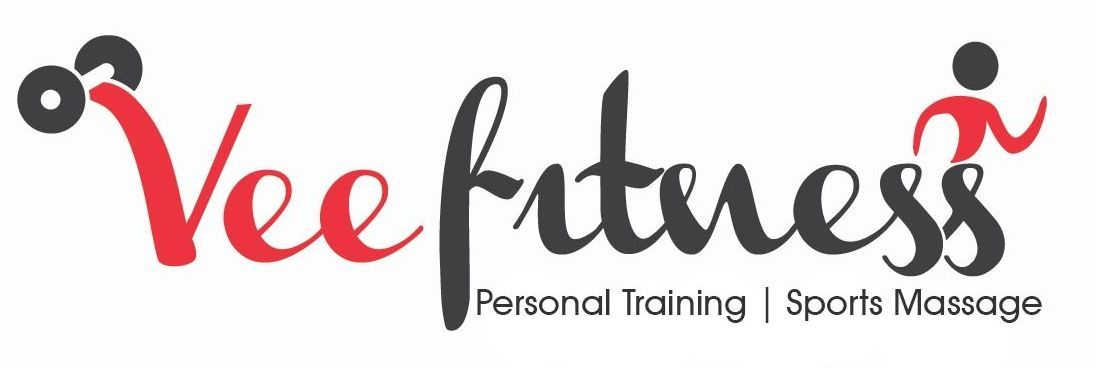Blog
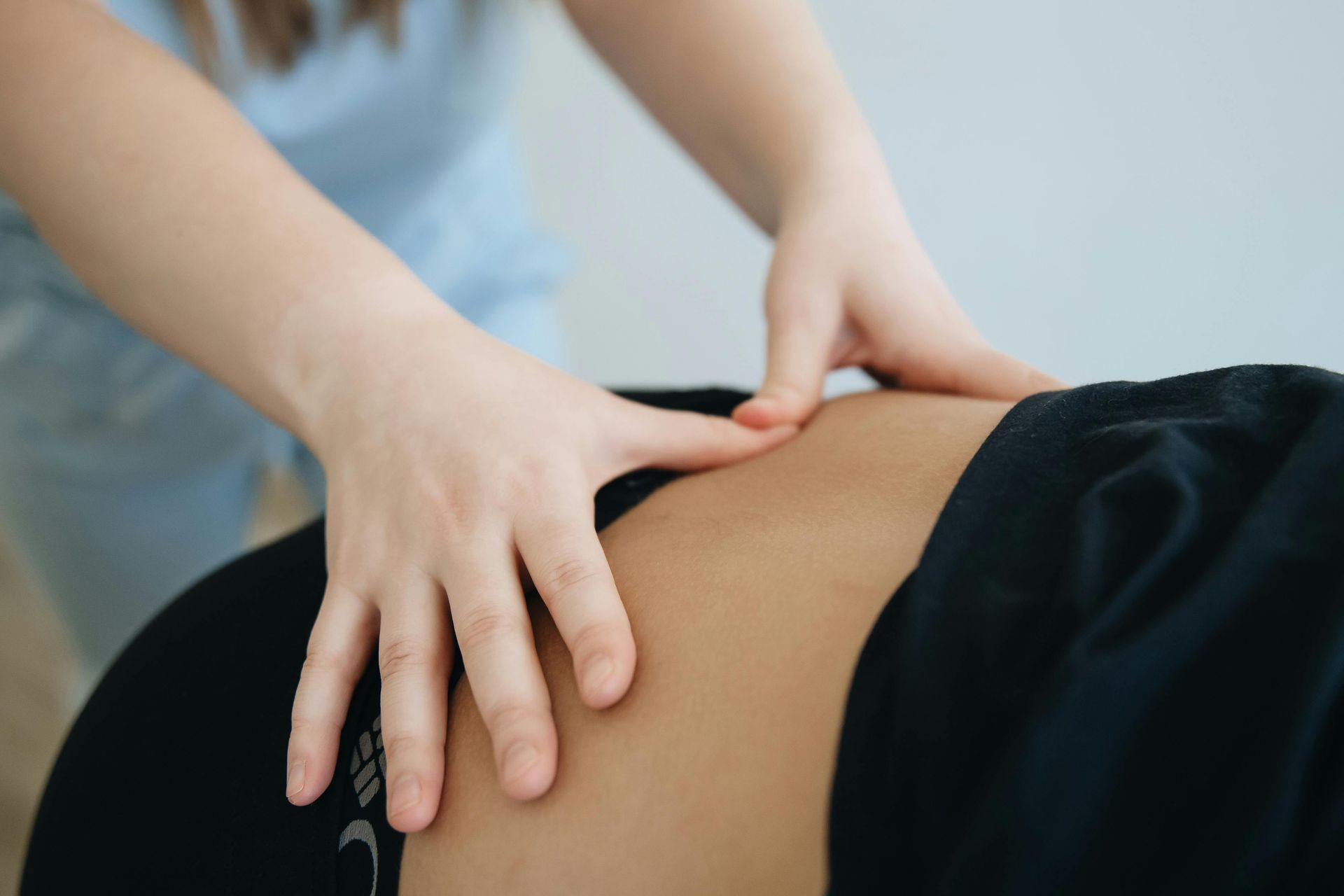
Sports massage is a specialised form of massage therapy designed to support active individuals, whether you're an athlete or someone who enjoys regular physical activity. This type of massage offers numerous benefits that can enhance your performance, aid recovery, and prevent injuries. In this blog post, we'll explore the key benefits of sports massage and how it can be an essential part of your fitness routine. 1. Improved Flexibility and Range of Motion One of the primary benefits of sports massage is its ability to improve flexibility and range of motion. By targeting specific muscle groups and using techniques such as deep tissue manipulation and stretching, sports massage helps elongate muscle fibres and reduce stiffness (1). This can lead to enhanced performance in activities that require flexibility, such as running, cycling, and swimming. 2. Enhanced Recovery from Exercise and Injury Sports massage promotes blood flow, which helps flush out toxins like lactic acid and reduces inflammation (2). This process accelerates recovery from intense workouts and injuries, allowing you to return to your peak condition more quickly. Regular sports massage can also minimise muscle soreness and prevent overuse injuries (3) 3. Reduced Muscle Tension and Pain Muscle tension and pain are common issues for active individuals. Sports massage targets tight areas and trigger points, providing immediate relief and improving overall mobility (4). This can be particularly beneficial for preventing injuries caused by muscle imbalances and repetitive movements. 4. Improved Circulation Enhanced circulation is another significant benefit of sports massage. By increasing blood flow to the muscles, sports massage helps deliver essential nutrients and oxygen, which are crucial for muscle repair and growth (5). Improved circulation also aids in the removal of metabolic waste products, further supporting recovery. 5. Stress Reduction and Mental Relaxation Physical activity can sometimes lead to mental stress and fatigue. Sports massage not only addresses physical issues but also promotes relaxation and reduces stress (1). The calming effects of massage can help improve your mental well-being, making it easier to stay focused and motivated in your fitness journey. Are you ready to experience the benefits of sports massage? Book your appointment today at Vee Fitness and take the first step towards enhancing your performance and recovery. Visit our website at www.veefitness.co.uk to learn more and schedule your session here . References: 1) Davis, H. L., Alabed, S., & Chico, T. J. A. (2020). Effect of sports massage on performance and recovery: a systematic review and meta-analysis. BMJ Open Sport & Exercise Medicine, 6(1), e000614. doi:10.1136/bmjsem-2019-000614. Available at: BMJ Open Sport & Exercise Medicine 2) Hinge Health. (2025). What Is a Sports Massage and Its Benefits. Available at: Hinge Health 3) Iler, D. (2025). 11 Benefits of Sports Massage: Your Key to Injury Prevention. Available at: Iler Method Massage 4) Kowalska, A. (2024). Top 10 Benefits of Sports Massage for Both Athletes and Non-Athletes. Available at: Fine Tune Allied Healthcare 5) Stebbins, E. (2024). Professional Sports Massage: Evidence-Based Practices Explained. Available at: True Balance Pain Relief

Back pain is a prevalent issue, especially among those leading high-stress corporate lives. However, misconceptions about back pain exercises can hinder effective relief. Let’s debunk five common myths and provide evidence-based insights to guide you on a journey to a pain-free life. Myth 1: High- Intensity Workouts Aggravate Back Pain Contrary to popular belief, high intensity workouts can be beneficial for back pain. Research indicates that tailored, supervised exercises, including high-intensity training, contribute to improved functional capacity and reduced pain (1). Myth 2: Bed Rest is the Best Solution Extended bed rest mat exacerbate back pain. Scientific studies recommend maintain normal daily activities and incorporating gently exercises to enhance recovery and prevent chronicity (2). Myth 3: Specific Exercises Targeting the Back are Ineffective Targeted back exercises are crucial. Evidence suggests that a combination of general fitness activities and specific back exercises yields better outcomes in managing and preventing back pain (3). Myth 4: Pain Equals Damage Experiencing pain during exercises doesn’t necessarily indicate harm. Scientific literature highlights that fear-avoidance beliefs can contribute to chronicity, empathising the importance of graded exposure to activities, even with some discomfort (4). Myth 5: Once Pain is Gone, Exercise is Unnecessary Maintaining a consistent exercise routine is crucial for long-term back health. Studies show that continued exercise helps prevent the recurrence of back pain and enhances overall well-being (5). Remember, an evidence-based approach tailored to your needs is key to busting these common myths and achieving lasting relief from back pain. References: 1) O’Sullivan et al. (2020). Back to basics: 10 facts every person should know about back pain. British Journal of Sports Medicine, 54(12), p698-699. 2) Six myths and misconceptions around lower back pain https://www.kingshealthpartners.org/latest/3744-six-myths-and-misconceptions-around-lower-back-pain 3) Back Pain: Common Myths and what to do when it strikes https://www.physiotherapymatters.co.uk/blog/back-pain-common-myths-and-what-to-do-when-it-strikes/ 4) Busting myths about back pain https://newtonphysio.com/blog/busting-myths-about-back-pain/ Low back pain – Myths vs Fact (Part 2) https://www.chiswick-physio.co.uk/blog/lowbackmythsvsfacts2

Back pain is a common issue, especially for individuals in high corporate jobs who may spend long hours sitting. Unfortunately, some well-intended exercises can exacerbate rather that alleviate back pain. Scientific studies emphasise the importance of addressing this issue to promote effective back pain management. The Mistake: Heavy physical work, improper weightlifting techniques and poor exercise habits are major contributors to back pain (1)(2)(3). Engaging in exercises that involve bending, twisting or using excessive weights can strain the lower back, exacerbating pain instead of relieving it. How to Correct It: 1) Proper form: Ensure exercises are performed with correct form, especially in weightlifting and activities involving bending and twisting. 2) Moderation: Avoid excessive weights and high-impact exercises, focusing on gradual progression. 3) Core Strengthening: Incorporate core-strengthening exercises to provide better support to the spine. 4) Consultation: Seek guidance from a healthcare professional or fitness expert to tailor the exercises to your needs. Remember, while exercises may offer relief incorrect techniques can lead to more harm than good. Tailoring a fitness routine to address specific need and consulting with professionals can significantly contribute to a healthier and pain-free back. References: 1) Heneweer et al. (2011). Physical Activity and Low Back Pain: A Systematic Review of Recent Literature. European Spine Journal, 20(6), p826-845 2) Fares et al. (2020). Low Back Pain Among Weightlifting Adolescents and Young Adults. Cureus, 12(7), e9127 3) 10 Exercises That Cause Back Pain: https://www.sapnamed.com/blog/10-exercise-mistakes-that-cause-back-pain/
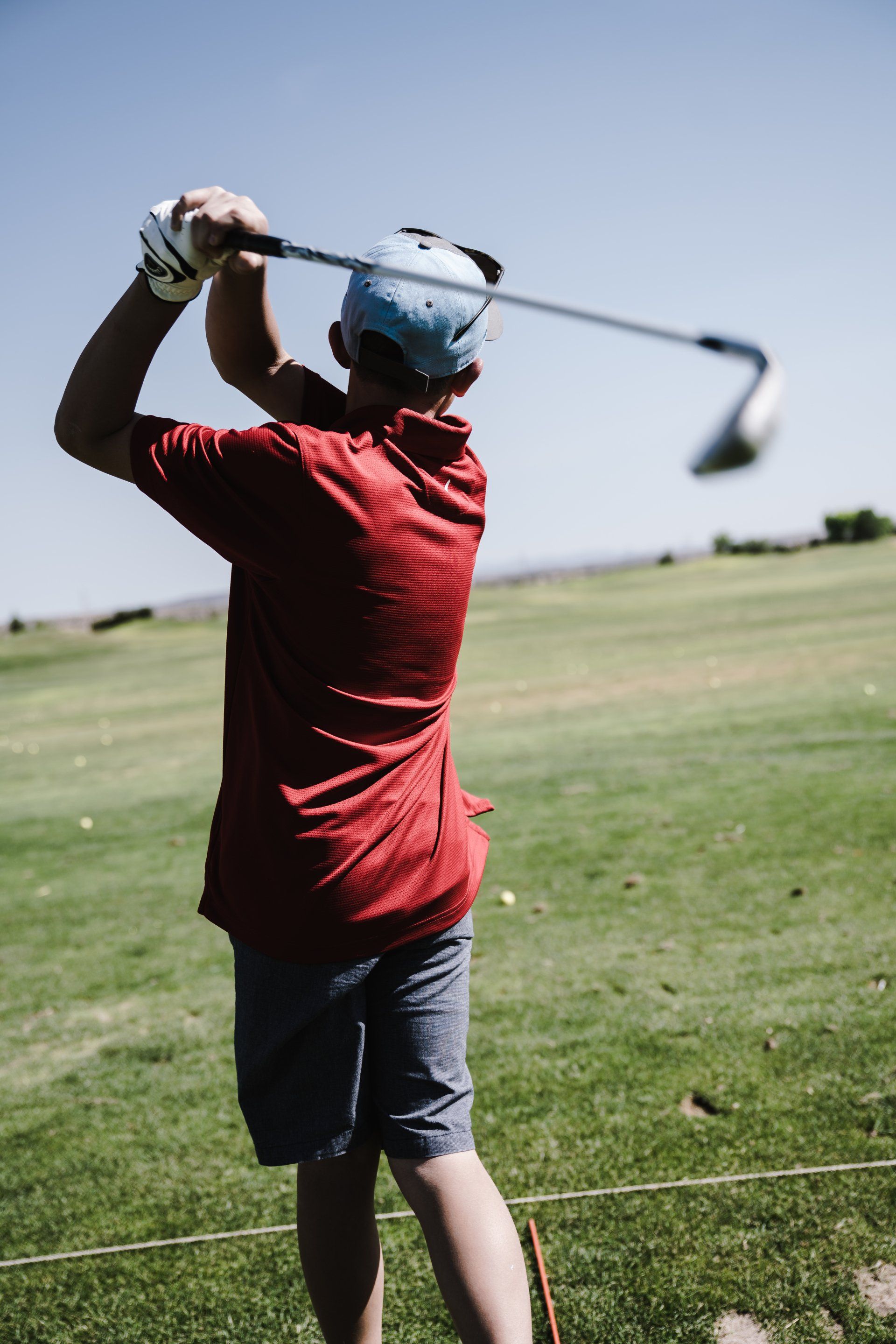
Shoulfer strength plays a significant role in improving performance in golf. Here are some ways in which shoulder strength can positively impact your golf game: 1) Increased Clubhead Speed: Strong shoulder muscles allow for a more powerful and efficient golf swing, resulting in increased clubhead speed. This can lead to longer drives and better overall distance on your shots (2). 2) Improved Control: Strong shoulders contribute to better control of the clubhead through impact. This control is essential for accuracy and consistency in your shots (2). 3) Enhanced Rotation: Adequate shoulder strength allows for proper rotation in the backswing, which is crucial for generating power and maintaining a smooth and efficient swing motion (2). 4) Scapular Stability: Strong shoulder muscles, specifically the scapular muscles, provide stability to the shoulder joint, allowing for better control and reduced risk of injury during the golf swing (2). 5) Improved Muscle Power: Strengthening the muscles in your shoulders can increase your muscle power, allowing for more explosive movements in your swing and generating greater force on the ball (1). 6) Injury prevention : Developing shoulder strength helps reduce the risk of shoulder injuries that can occur due to the repetitive nature of the golf swing. Strengthening the muscles around the shoulder joint provides stability and support, minimizing the chances of strain or overuse injuries (2). Incorporating exercises that target the shoulder muscles, such as scapular push-ups, wall slides, Y's and T's, and band pull-aparts, into your fitness routine can help improve shoulder strength and enhance your golf performance (2). It is important to note that a comprehensive strength and conditioning program, guided by professionals, can provide optimal results for golf performance, injury prevention, and overall well-being (3). References: 1) https://journals.lww.com/nsca-jscr/Fulltext/2022/01000/Physical_Determinants_of_Golf_Swing_Performance__A.44.aspx TITLE: Physical Determinants of Golf Swing Performance: A Review 2) https://www.nationalclubgolfer.com/news/golf-fitness-tips-strengthen-shoulders-more-speed/ TITLE: Strengthen your shoulders for more speed - National Club Golfer 3) https://blogs.bmj.com/bjsm/2020/08/12/how-the-best-golfers-in-the-world-are-using-strength-conditioning-to-elevate-their-performance/ TITLE: How the best golfers in the world are using Strength & Conditioning to Elevate Their Performance

Mobility exercises are of great importance while sitting at your desk for prolonged periods. Engaging in regular mobility exercises can have several benefits for your physical well-being and overall health. Here are some key points regarding the importance of mobility exercises at your desk: 1) Counteracting the negative effects of prolonged sitting: Sitting for extended periods can lead to stiffness, muscle imbalances, poor posture, and reduced joint mobility. Mobility exercises help combat these effects by promoting movement, stretching tight muscles, and improving joint range of motion (6). 2) Enhancing posture and reducing aches and pains: Sitting at a desk often involves poor posture, which can contribute to discomfort in the neck, shoulders, back, and hips. Mobility exercises can help improve posture by stretching and strengthening the muscles responsible for maintaining proper alignment (6). Regularly incorporating mobility exercises can alleviate aches and pains associated with sedentary work (7). 3) Increasing flexibility and range of motion: Desk-bound work can lead to decreased flexibility and limited joint mobility. By performing mobility exercises, you can improve your flexibility and increase the range of motion in your joints. This can have a positive impact on your daily movements and overall functional abilities (8). 4) Preventing injuries: Engaging in regular mobility exercises helps maintain joint health and reduces the risk of injuries. Improved mobility and flexibility contribute to better movement mechanics and reduce the likelihood of strains, sprains, and other musculoskeletal issues. Mobility training can also help address mobility limitations resulting from previous injuries or a sedentary lifestyle (10). 5) Alleviating stress and enhancing mental well-being: Incorporating mobility exercises throughout the workday can help reduce stress levels and enhance mental well-being. Movement and physical activity have been shown to boost mood, improve focus, and increase productivity (2)(13). 6) Promoting circulation and preventing sedentary-related health issues: Sitting for prolonged periods can negatively impact circulation and increase the risk of developing health issues such as obesity, cardiovascular disease, and musculoskeletal disorders. Mobility exercises encourage blood flow, which helps combat the negative effects of prolonged sitting and reduces the risk of related health problems (2)(3). By incorporating mobility exercises into your desk routine, you can improve your physical well-being, prevent discomfort, maintain joint health, and enhance your overall quality of life. Remember to consult a healthcare professional or seek guidance if you have any underlying health conditions or concerns before starting an exercise program. Found this helpful? Save for later and SHARE with a friend. Need a mobility plan that actually works? One that addresses the root issues and helps you build long lasting mobility. Contact us with the word MOBILITY . References: 1) TITLE: 6 Exercises You Can Do at Your Desk – Cleveland Clinic https://health.clevelandclinic.org/desk-exercises/ 2) TITLE: The Ultimate 'Deskercise' Routine: Stretches for the Office – Healthline https://www.healthline.com/health/deskercise 3) TITLE: Desk Exercises: How to Do Them and Why They're Important - Insider https://www.insider.com/guides/health/fitness/desk-exercises 4) TITLE: Office Exercises: 30 Exercises to Do at Your Desk - Healthline https://www.healthline.com/health/fitness/office-exercises 5) https://www.nasa.gov/sites/default/files/atoms/files/hq_deskfit_booklet_6.10.2020.pdf 6) https://sunnyhealthfitness.com/blogs/health-wellness/mobility-desk-exercises 7) TITLE: Desk-based exercises - The Chartered Society of Physiotherapy https://www.csp.org.uk/public-patient/keeping-active-healthy/staying-healthy-work/desk-based-exercises 8) https://www.shape.com/best-mobility-exercises-6832528 9) Mobility Exercises: For Flexibility and Performance – Healthline https://www.healthline.com/health/fitness-exercise/joint-mobility-exercises 10) TITLE: Your Guide to Mobility Training — Benefits, Exercises, and More - Shape https://www.shape.com/mobility-training-6828794 11) https://www.healthline.com/health/fitness/thoracic-mobility-exercises 12) https://www.verywellfit.com/joint-mobility-exercises-to-improve-flexibility-5323188 https://www.byrdie.com/what-exercises-can-i-do-while-sitting-at-my-desk
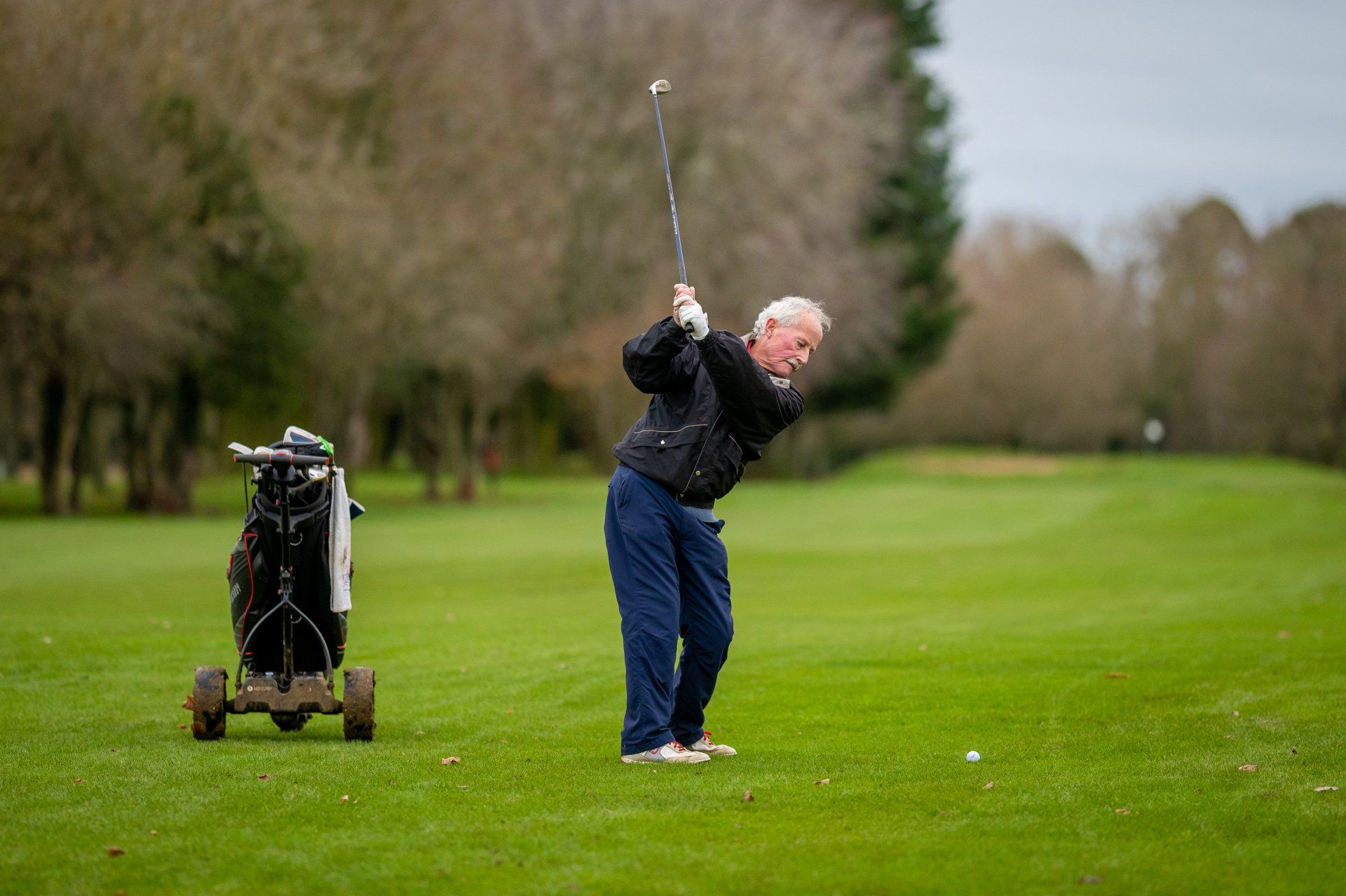
Improving leg strength can have several positive effects on your backswing in golf: 1) Increased Flexibility and Range of Motion: Strengthening your leg muscles, particularly the hip flexors, hamstrings, and glutes, can improve your overall flexibility and range of motion in the hips and lower body (1). This increased flexibility allows for a greater turn and rotation during your backswing, enabling you to generate more power and achieve a longer swing arc. 2) Enhanced Stability and Balance: Leg strength is crucial for maintaining stability and balance throughout the golf swing. Strong leg muscles provide a solid foundation, allowing you to stay grounded and maintain a stable lower body position during the backswing (2). Improved stability and balance contribute to better control over your swing, leading to more consistent ball-striking and accuracy. 3) Improved Weight Transfer: Leg strength plays a significant role in facilitating proper weight transfer during the swing. As you shift your weight from the back leg to the front leg during the downswing, strong leg muscles provide the necessary power and stability for an efficient weight shift (2). This transfer of weight allows you to generate more clubhead speed and power through impact, resulting in longer shots. 4) Increased Clubhead Speed: Leg strength contributes to generating more clubhead speed during the downswing. As you push off the ground with your legs and initiate the rotational movement, the power generated from your leg muscles transfers up through your body and into the club (4). This added speed and power can lead to greater distance off the tee and improved overall swing performance. 5) Improved Overall Performance and Injury Prevention: Developing leg strength through exercises such as squats, lunges, and deadlifts not only benefits your backswing but also enhances your overall performance on the golf course (11). Strong legs provide stability during all phases of the swing, improve weight distribution, and help prevent injuries by supporting the joints and reducing excessive strain on other parts of the body. To improve leg strength specifically for your backswing, you can incorporate exercises that target the major leg muscles, including squats, lunges, deadlifts, leg presses, and plyometric movements, into your fitness routine (8). Additionally, practicing yoga poses that focus on leg strength and flexibility, such as Warrior II and Downward-Facing Dog, can also be beneficial (7). It's important to consult with a fitness professional or golf instructor to ensure that your training program is appropriate for your fitness level and golf goals. If you would like to improve your swing and gain more yardage, please contact us . References: 1) URL: https://golf.com/instruction/2-power-boosting-tips-increase-backswing/ TITLE: 2 power-boosting tips to increase your backswing turn for longer drives 2) URL: https://www.golfdistillery.com/swing-tips/backswing/ TITLE: Golf Backswing - How to Correctly Perform your Backswing (Golf Swing) 3) URL: https://www.youtube.com/watch?v=czu7nCbie1o TITLE: MAKE THE PERFECT GOLF BACKSWING - LOAD BETTER – YouTube 4) URL: https://www.mytpi.com/articles/fitness/the_benefits_of_single_leg_training_for_golfers TITLE: The Benefits of Single Leg Training for Golfers | Article | TPI 5) URL: https://golf.com/instruction/fitness/try-3-stretches-bigger-backswing-more-power/ TITLE: Try these 3 stretches for a bigger backswing (and more power) - GOLF.com 6) URL: https://www.golfchannel.com/video/golf-fix-perfect-backswing TITLE: How to make a proper golf backswing | Golf Channel 7) URL: https://www.healthline.com/health/yoga-for-legs TITLE: Yoga For Legs: 7 Poses for Toning, Strengthening, Flexibility - Healthline 8) URL: https://www.webmd.com/fitness-exercise/features/strength-training-building-leg-muscles TITLE: Get Stronger Legs With These Exercises - WebMD 9) URL: https://www.healthline.com/health/fitness/benefits-of-strength-training TITLE: 14 Benefits of Strength Training, Backed by Science - Healthline 10) URL: https://www.coastalorthopedics.com/blog/how-can-posture-improve-a-backswing TITLE: How Can Posture Improve a Backswing? - Coastal Orthopedics 11) URL: https://www.gearssports.com/articles/the-15-best-golf-leg-workouts-for-improving-golf-performance/ TITLE: Golf Leg Workouts: 15 Best Exercises to Improve Golf Performance 12) URL: https://www.healthline.com/health/exercise-fitness/never-skip-leg-day TITLE: Never Skip a Leg Day: Benefits, Cautions, and More - Healthline

Staying active plays a crucial role in managing diabetes by offering various benefits for individuals with the condition. Regular physical activity can help control blood sugar levels, improve insulin sensitivity, reduce the risk of heart disease and nerve damage, control weight, lower blood pressure, improve cholesterol levels, strengthen muscles and bones, reduce anxiety, enhance general well-being, and even improve memory (1)(2)(3)(4)(7)(8)(12)(13). When you are active, your body becomes more sensitive to insulin, allowing cells to use blood sugar for energy. This increased sensitivity helps manage diabetes and control blood sugar levels (1). Regular physical activity can also reduce the amount of insulin needed, as it improves insulin sensitivity over time (7). Exercise can directly lower blood sugar levels, and it is recommended to aim for at least 150 minutes of moderately intense physical activities per week (3). Engaging in activities that get you out of breath, such as fast walking, climbing stairs, or doing more strenuous housework or gardening, can be effective (4). In addition to blood sugar control, staying active helps manage weight. Exercise burns extra calories, which can aid in weight management or weight loss if needed (2)(8). Maintaining a healthy weight is important for diabetes management as it can improve insulin sensitivity and overall glycemic control. Regular physical activity also has cardiovascular benefits for individuals with diabetes. It can help lower blood pressure, improve blood flow, and lower the levels of harmful LDL cholesterol and triglycerides while raising healthy HDL cholesterol (2)(8). These improvements contribute to a reduced risk of heart disease, a common complication associated with diabetes. Engaging in physical activity can have a positive impact on mental well-being as well. Exercise has been shown to reduce anxiety and improve mood, which can have a significant impact on overall quality of life for individuals managing diabetes (2)(9)(13). To receive the best health benefits, it is recommended to consult with your doctor about the best time to exercise, potential impact of medications on blood sugar levels during physical activity, and individualized exercise plans [ 3 ]. It's important to note that exercise is not a replacement for other diabetes management strategies, such as medication or dietary changes, but rather a supportive component of a comprehensive approach to managing diabetes (10). In summary, staying active is highly beneficial for managing diabetes. It can help control blood sugar levels, improve insulin sensitivity, manage weight, lower blood pressure, improve cholesterol levels, strengthen muscles and bones, reduce anxiety, enhance general well-being, and improve memory. Regular physical activity is a foundational element of diabetes management and should be incorporated into an individual's overall diabetes care plan. References : [1] "Nov 3, 2022 · If you have diabetes, being active makes your body more sensitive to insulin (the hormone that allows cells in your body to use blood sugar for energy), which helps manage your diabetes. Physical activity also helps control blood sugar levels and lowers your risk of heart disease and nerve damage.” URL: https://www.cdc.gov/diabetes/managing/active.html [2] "Feb 3, 2021 · Exercise helps control weight, lower blood pressure, lower harmful LDL cholesterol and triglycerides, raise healthy HDL cholesterol, strengthen muscles and bones, reduce anxiety, and improve your general well-being." URL: https://www.health.harvard.edu/staying-healthy/the-importance-of-exercise-when-you-have-diabetes [3] "Jan 20, 2022 · Your doctor can also suggest the best time to exercise and explain the potential impact of medications on your blood sugar as you become more active. For the best health benefits, experts recommend at least 150 minutes a week of moderately intense physical activities such as: Fast walking Lap swimming Bicycling" URL: https://www.mayoclinic.org/diseases-conditions/diabetes/in-depth/diabetes-and-exercise/art-20045697 [4] "Being active lowers your blood sugar level Physical exercise helps lower your blood sugar level. You should aim for 2.5 hours of activity a week. You can be active anywhere as long as what you're doing gets you out of breath. This could be: fast walking climbing stairs doing more strenuous housework or gardening" URL: https://www.nhs.uk/conditions/type-2-diabetes/food-and-keeping-active/ [5] "" URL: https://www.mayoclinic.org/diseases-conditions/type-2-diabetes/in-depth/diabetes-prevention/art-20047639 [6] "Feb 16, 2018 · Staying active is key to managing your blood sugar if you have type 2 diabetes. Here are five ways to get exercise without an expensive gym membership." URL: https://www.healthline.com/health/type-2-diabetes/stay-active-without-the-gym [7] "Jul 27, 2022 · Improve blood sugar control – Regular physical activity can make it easier for your cells to absorb blood sugar, which means that you may need less insulin. This is called insulin sensitivity, and over time, it can lead to better blood sugar control. A great indicator of long-term blood sugar control is your haemoglobin A1C." URL: https://www.cdc.gov/diabetes/library/spotlights/diabetes-physical-activity.html [8] "Physical activity is an important part of managing your blood glucose level and staying healthy. Being active has many health benefits. Physical activity lowers blood glucose levels lowers blood pressure improves blood flow burns extra calories so you can keep your weight down if needed improves your mood" URL: https://www.niddk.nih.gov/health-information/diabetes/overview/diet-eating-physical-activity [9] "Apr 6, 2018 · Staying active - challenging as it may be when you’re not feeling well - is key to controlling diabetes. Members of MyDiabetesTeam say exercise has helped them lower blood sugar, lose weight, and improve overall quality of life." URL: https://www.diabetesteam.com/resources/staying-active-and-diabetes [10] "Jan 30, 2023 · Lifestyle changes such as eating healthy and being active are an important part of managing diabetes. But your doctor may also prescribe a combination of medicines to help you manage your diabetes and reduce the risk of complications." URL: https://www.cdc.gov/diabetes/library/features/Statins_Diabetes.html [11] "Jun 3, 2022 · A key to many diabetes management plans is learning how to count carbohydrates. Carbohydrates often have the biggest impact on your blood sugar levels. For people taking mealtime insulin, it's important to know the amount of carbohydrates in your food, so you get the proper insulin dose. Learn what portion size is appropriate for each food type." URL: https://www.mayoclinic.org/diseases-conditions/diabetes/in-depth/diabetes-management/art-20047963 [12] "Staying active can: Help control your blood sugar Help control your weight Keep your heart, lungs, and blood vessels healthy While the focus of activity is often weight loss, you can benefit and become healthier from activity even without losing weight. Staying Active at Home One of the best things you can do is get up and start moving." URL: https://medlineplus.gov/ency/patientinstructions/000084.htm [13] "Nov 3, 2022 · There are so many benefits, from sleeping better to feeling happier. Regular physical activity can also help you: Lose or maintain your weight. Improve your memory. Manage your blood pressure. Lower LDL (“bad”) cholesterol and raise HDL (“good”) cholesterol. Physical activity is a foundation of diabetes management." URL: https://www.cdc.gov/diabetes/library/features/get-moving-to-manage-diabetes.html
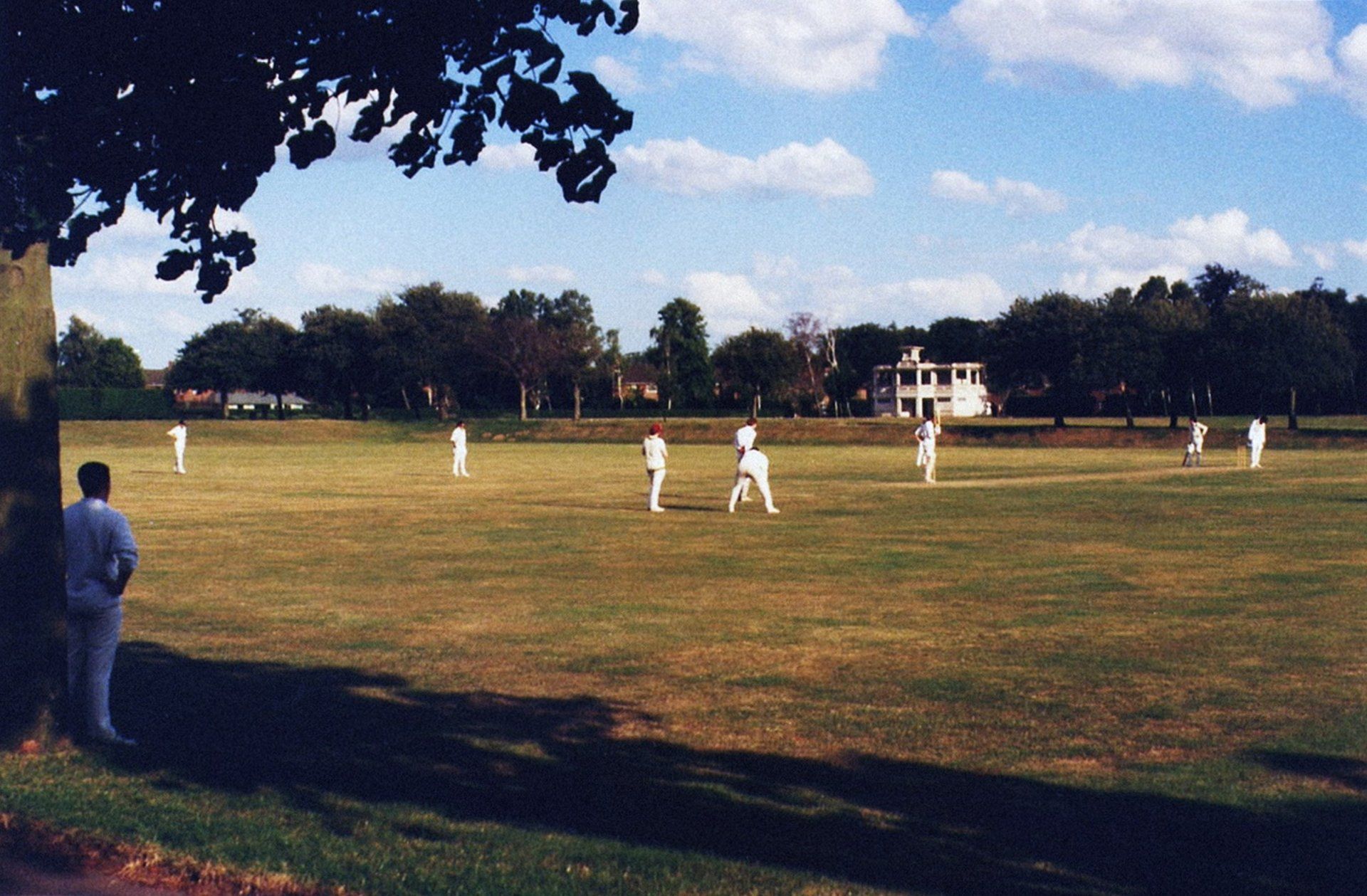
Opening up the hips is an important aspect for cricket bowlers, and it contributes to their overall performance and ability to generate power and speed in their bowling action. Here are the reasons why opening up the hips is significant for cricket bowlers: 1) Increased Hip/Shoulder Separation: Side-on bowlers, who have the potential to bowl faster, can create greater hip/shoulder separation by opening up their hips during the bowling action. This separation allows them to generate more power and safely transfer the energy from the lower body to the upper body, resulting in a bigger stretch and more forceful delivery (2). 2) Hip Drive and Front-On Motion: Opening up the hips allows bowlers, particularly side-on bowlers, to initiate the motion of moving from a side-on position to a front-on position. This hip drive helps in transferring momentum and rotational force from the back foot to the front foot, adding to the power and speed of the delivery (3). 3) Hip to Shoulder Separation in Spin Bowling: In spin bowling, hip to shoulder separation is crucial for generating spin and velocity. This separation allows the bowler to create torque and whip the arm through, leading to increased rotation on the ball (4). 4) Power Generation and Weight Transfer: Turning the hips and opening them up aids in power generation during the bowling action. It completes the weight transfer from the back foot to the front foot, allowing the bowler to transfer energy effectively and generate more force through the delivery stride (6). 5) Injury Prevention: Maintaining proper alignment between the hips and shoulders is crucial for injury prevention. As long as the hips and shoulders remain aligned, the risk of injury is minimal for bowlers. Opening up the hips in coordination with the rest of the body helps in maintaining the correct alignment and reducing the risk of injury (7). In summary, opening up the hips plays a vital role in a cricket bowler’s technique. It enables increased hip/shoulder separation, initiates the motion from side-on to front-on, aids in generating power and speed, contributes to spin bowling techniques, and helps prevent injuries. References: (1) "Bowlers with hip internal rotation of ≤30° on the leg ipsilateral to the bowling arm were at a significantly reduced risk compared with bowlers with >40° of rotation . In addition, bowlers with an ankle dorsiflexion lunge of 12–14 cm on the leg contralateral to the bowling arm were at a significantly increased risk compared with bowlers ..." URL: https://journals.lww.com/nsca-scj/fulltext/2014/12000/strength_and_conditioning_for_cricket_fast_bowlers.10.aspx (2) "Side-On bowlers may have potential to bowl faster than Front-On or Midway bowlers because they can create greater Hip/Shoulder Separation more safely. A effective Back Foot Contact is especially important for Side-On Bowlers as it allows their hips to quickly rotate forwards ahead of their shoulders, creating a bigger stretch." URL: https://www.howtobowlfast.com/separation (3) "Since we’ve discussed the legs, it’s only logical to talk about the next step in the chain: The hips. Everyone knows that to bowl fast you’ve got to 'drive your hips through'. What does that really mean? Hip drive explained. For a side-on bowler, the hips should start the motion of moving from side on to front on." URL: https://www.pitchvision.com/fast-bowling-hip-drive (4)"Improve Your Spin Bowling with Better Hip to Shoulder Separation. Tweet. This is a guest article from Max Andrews. “Hip to shoulder separation” is one of the most important movements in generating spin and velocity." URL: https://www.pitchvision.com/spin-hips (5) "Mar 23, 2022 · In this video I will talk about what is Hip Shoulder Separation and how it is very important in Fast Bowling. Hip Shoulder Separation can increase your bowling in cricket. I hope these cricket ..." URL: https://www.youtube.com/watch?v=VNPlUPbdkzU (6) "Mar 19, 2008 · Turning the hips gives power as it completes a weight transfer from back to front foot in the case of bowling. It also creates a power blast between the hips and knees which results in bowlers 'getting off their feet' in some pictures you may have seen (cricinfo had one of Jimmy Anderson)." URL: https://www.cricketweb.net/forum/threads/what-does-turning-the-hips-do-in-a-bowling-action.37540/ (7)"Mar 3, 2019 · In any ODI, a bowler can roll the arm over up to 60 times. However, as long as the hips and shoulders remain aligned, the risk of injury is actually minimal, he said, though that often changes the ..." URL: https://www.stuff.co.nz/sport/cricket/110638649/how-fast-bowling-in-cricket-puts-the-same-stress-on-your-body-as-a-minor-car-accident
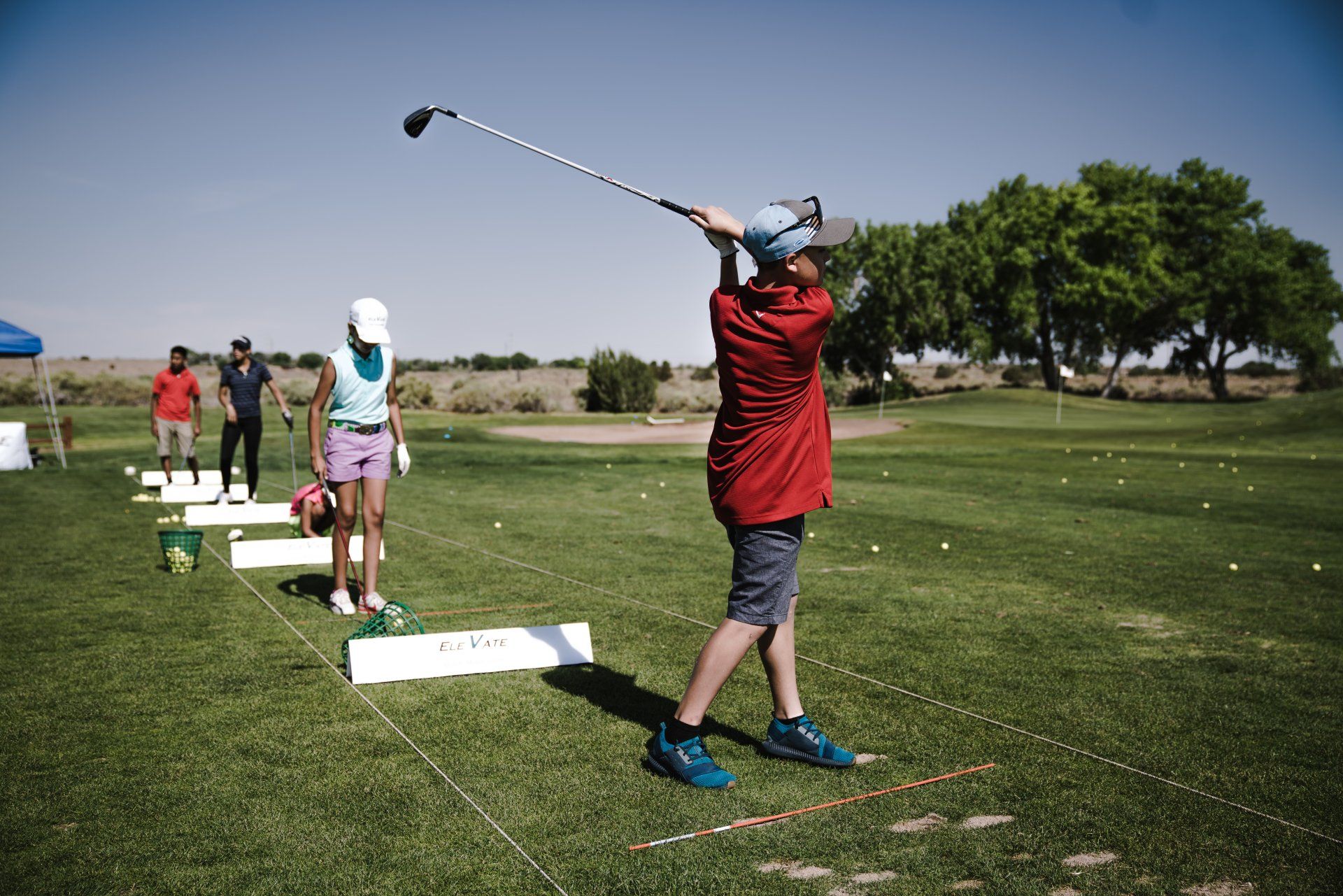
Hip Rotation is a crucial element in golf performance, and understanding its importance can greatly enhance your skills on the golf course. It contributes to various aspects of the golf swing, including balance, power, control, accuracy, and club placement upon striking the ball. Let's explore why hip rotation is significant for your golf performance. Hip rotation plays a fundamental role in generating power and transferring it efficiently throughout the swing. By utilizing proper hip rotation, you can maximize the energy generated from your lower body and effectively transfer it to the upper body and ultimately to the clubhead at impact. This transfer of energy leads to increased clubhead speed, which is essential for generating distance and power in your shots. The website Golf Swing Remedy emphasizes the importance of hip rotation in improving balance, power, control, and accuracy in your golf swing [1]. By incorporating proper hip rotation, you can achieve better balance and stability, allowing you to maintain control over your swing and strike the ball with precision. Furthermore, hip rotation helps in maintaining the correct swing plane and clubface alignment. As you rotate your hips during the swing, it assists in keeping the club on the proper swing path, leading to a more consistent and accurate strike. By avoiding excessive lateral sway and focusing on proper hip rotation, you can ensure that the clubface is square at impact, resulting in straighter shots and better ball control. Golf Digest highlights the importance of hip rotation by providing key instructions on how to unlock extra power by rotating the hips (2). Improving hip rotation can also benefit your overall golf performance by enhancing your flexibility and range of motion. Restricted hip rotation can limit the amount of turn you can achieve in your backswing, leading to a shortened swing and reduced power potential. By working on increasing your hip rotation, you can increase your shoulder turn, allowing for a longer backswing and increased potential for generating clubhead speed. In a YouTube video by a golf performance coach, the importance of improving internal hip rotation is emphasized (3). To improve your hip rotation in golf, consistent practice is crucial. Engaging in exercises and drills that focus on hip mobility, flexibility, and strengthening can help you develop a more efficient and powerful hip rotation. Additionally, seeking guidance from a golf professional or coach who can provide personalized instruction and feedback can greatly assist you in refining your hip rotation technique. In conclusion, hip rotation is an essential component of the golf swing that significantly impacts your performance. By emphasizing proper hip rotation, you can enhance your balance, power, control, accuracy, and club placement. Remember to prioritize hip mobility, flexibility, and strengthening exercises to improve your hip rotation and consult with a golf professional for personalized guidance. References: (1) “Summary Hip rotation is very important in golfing, and learning to perfect it through continued practice is all-important, especially if you want to be a top competitor. Hip rotation and not swaying will improve balance, power, control, and feed, as well as that needed edge of perfect accuracy and the square placement of the club upon striking." URL: https://golfswingremedy.com/hip-turn-in-golf-swing/ (2) “Mar 30, 2016. Brace on the inside of your right foot, and turn your right butt cheek behind you. Remember these keys: The right hip turns back, and the left knee moves toward the ball ( below ). That ..." URL: https://www.golfdigest.com/story/unlock-extra-power-by-rotating-your-hips (3) "Golf performance coach, Josh, goes over how to improve internal hip rotation and why it is so important. Access our golf performance assessment here: https:/..." URL: https://www.youtube.com/watch?v=bGnW-4S7Kkg
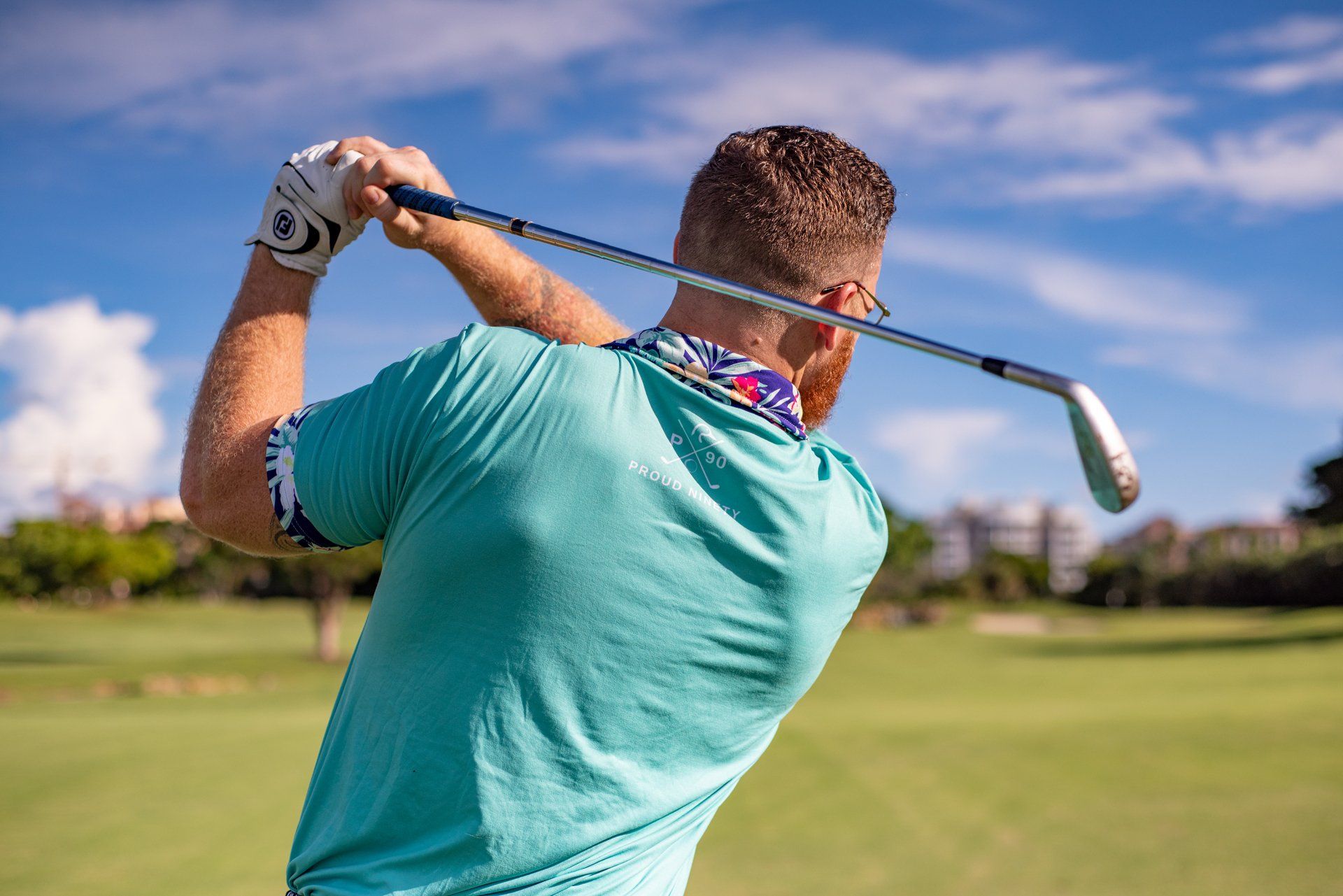
Strength training can improve club head speed in golf by increasing the muscle strength and power, which are essential for generating speed and force in the golf swing. According to a study published in the Journal of Strength and Conditioning Research, strength training can significantly increase club head speed in golfers (1). When it comes to improving club head speed through strength training, exercises that target the muscles used in the golf swing can be particularly beneficial. These may include exercises such as squats, lunges, deadlifts, and overhead presses, which can improve lower body and core strength, as well as upper body power (2). It’s important to note that strength training alone may not be enough to improve club head speed. Proper technique, flexibility, and coordination are also essential components of a powerful and efficient golf swing. Therefore, golf-specific training that includes strength training as well as other elements such as mobility, stability, and skill practice may be the most effective approach for improving club head speed and overall golf performance (3). In summary, strength training can improve club head speed in golf by increasing muscle strength and power, particularly in the muscles used in the golf swing. However, it's important to combine strength training with other components of a comprehensive golf training program to achieve optimal results. References: (1) https://journals.lww.com/nsca-jscr/Abstract/2005/11000/The_Effects_of_Strength_Training_on_Golf_Swing.32.aspx (2) https://www.mytpi.com/articles/fitness/how_strength_training_can_increase_your_swing_speed (3) https://www.golfdigest.com/story.golf-fitness-tp-strength-training-can -increase-your-clubhead-speed
